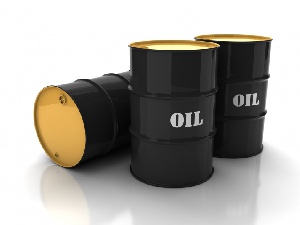Crude oil prices are only back to normal and they will remain so unless there is a "major shock", like an India following a China growth trajectory and guzzling more oil or in the event of a major geopolitical upheaval, independent economists at London-based Llewellyn Consulting have said.
In an inflation-adjusted analysis that traces the movement of crude prices to 1861, around when the industry began, the consultants concluded that 76% of the time prices have hovered between US$10 and US$40 per barrel.
It takes “major shocks” for prices to break out of that channel, like when the United States became a major importer in 1973 and when China began enjoying a period of rapid, energy-intensive growth post-2000 and its entry into the World Trade Organisation,” the researchers said.
They thus see prices remaining in this range for "some considerable period of time", barring any more of such shocks.
As of Friday, Brent crude was trading between US$36 and US$37 per barrel, with some analysts and traders pricing oil higher in the near-term, in the face of a decision by some OPEC members to cut back on oil production.
Speaking to African journalists in Johannesburg at the instance of fuel trader Puma Energy, a partner at Llewellyn Consulting, Russel Jones said: “Basically, the current oil price is pretty usual; it is not that extraordinary in the greater historical scheme of things. It is, if you like, where the oil price is meant to be.
“Our view is that given that so much of this supply capacity remains and will have an enduring influence, and given our view that the world economy is not going to be healed any time soon, it is quite likely that we will see the oil price remain pretty close to where it is now,” Russel Jones said.
The scale of demand growth that could see prices shooting up to extraordinary levels is in the millions of barrels per day; China’s demand, for example, grew by 5million barrels per day in eight or nine years.
“That is the kind of scale of demand growth you are looking for. It could come from a number of countries in Africa suddenly being energy intensive and thirsty…we are not saying it is going to stay within this range forever, but at the moment we can see why it is within this range,” said Ben Combes, a Director at Llewellyn Consulting.
A lot of supply is already out there, and the next big oil price move will be demand-led, Combes said -- adding that with rising US production, OPEC has lost its ‘cartel’ status, and cannot hold off supply to significant effect.
“I notice that Trafigura is doing the first export out of the US to Israel in the next few weeks, which is a very interesting development. So the US is now able to play that swing-producer role to supply the market,” Combes said.
In the African context, heavily oil-dependent countries like Nigeria need to diversify their sources of revenue and undertake structural reforms.
“It desperately needs a weaker currency, but the government seems rather reluctant to go down that track. At the moment I think the outlook is troubling. It’s an economy that desperately needs to be better run,” Russel Jones said.
Asked to comment on whether low prices are better for Ghana, which is a net importer, Russell Jones said: “In Ghana’s case, and I am certainly not an expert on Ghana, I would suggest that as a net importer, over the longer-term you would probably get more benefit out of it than cost; but there is bound to be some disruptions in the short-term.”
He added that: “One point I will ask you to take away is that if you are a producer of a primary commodity and your economy is very dependent on it, you have to make the adjustment to that very rapidly because it hits your tax revenues and it hits the major industry in your economy. So the onus is on you to adjust and it is very painful.”
Also commenting on the energy levies, Russel Jones said it made sense macro-economically to try and keep the actual retail price of oil stable by raising levies on it when the price drops rapidly.
“On the other hand, you would like it to be symmetrical so that if the oil price jumps very dramatically government reduces the level of taxation. You try to keep things as constant as possible. From a macroeconomic perspective, it is all about trying to encourage stability,” he said.
Business News of Monday, 29 February 2016
Source: B&FT Online







![NPP Flagbearer, Dr. Mahamudu Bawumia [L] and NDC Flagbearer John Mahama NPP Flagbearer, Dr. Mahamudu Bawumia [L] and NDC Flagbearer John Mahama](https://cdn.ghanaweb.com/imagelib/pics/869/86902869.295.jpg)









